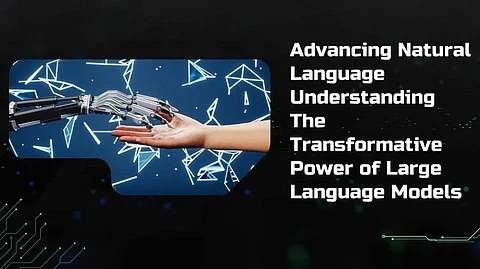

In the rapidly evolving world of artificial intelligence, few advancements have had as profound an impact as Large Language Models (LLMs). Rajnish Jain, a distinguished researcher in the field, explores the innovations driving these models and their implications for Natural Language Understanding (NLU) in his latest work. His insights delve into the breakthroughs that make these models more efficient, accessible, and capable of handling complex linguistic tasks. As these models continue to evolve, they are reshaping industries and transforming the way humans interact with technology.
It is the original architecture of transformers that lies at the heart of LLMs-a genuine revolution in the way machines process human language. Rather than simply using traditional lexical or grammatical structures, the transformer mechanism relies upon attention between words in a sentence to analyze it. This is what makes it realize comprehension superior to machines today. The result of this fundamental shift is astounding progress in machine translation, sentiment analysis, and text summarization, with the setting of new frontiers in these fields. Active research continues to focus on lightweight transformer variants and efficiency improvements in these models.
The new avenues of training opened up after have certainly revolutionized LLMs in efficiency. Similarly, the recent method is integrating bidirectional learning, masked token prediction, and self-supervised into the system for the improvement of the performance yet still lessening computational cost. By parameter-efficient fine-tuning innovations, resource requirements for training have thus by over 50% reduced which adds to making these models more widespread to a wider consumer range. Likewise, they also worked with reinforcement learning from human feedback (RLHF), which allowed these models to respond better-at the same time more contextually-as it relates to human preferences leading to the consideration of ethical matters.
One of the most groundbreaking developments in LLMs is their growing ability to process multiple languages with unprecedented accuracy. These models are now capable of not only understanding and translating languages but also identifying linguistic patterns across them. This advancement holds immense potential for breaking language barriers and democratizing access to information in underrepresented linguistic communities. Continued research into low-resource language modeling aims to bridge the gap for regions where digital content is scarce.
Beyond simple language processing, LLMs have demonstrated remarkable improvements in structured reasoning. Research highlights a 31.4% increase in performance on logical reasoning tasks, allowing these models to excel in areas such as legal analysis, scientific discovery, and technical document interpretation. The ability to maintain context across long passages also positions LLMs as indispensable tools for research and education. Additionally, improvements in long-context processing allow these models to handle extensive conversations, making them more effective for applications in fields such as law, customer support, and medical documentation.
The greatest abilities of these models come with even greater challenges regarding their scalability and ecological footprint. Training state-of-the-art models requires thousands of cores running for weeks, and with the scale of energy consumption comes the question of sustainability. Hence, there are attempts at making energy-efficient techniques for training through adaptive computation or sparse transformer architectures that are to a substantial extent low-power without much change in performance. Researchers are also working on quantization methods, in which model parameters are compressed to lessen the memory footfall.
The rapid advancement of LLMs has also sparked discussions about ethical considerations. These models, trained on extensive datasets, risk perpetuating biases present in their source material. Researchers are actively working on mitigation strategies, such as refining training datasets and implementing bias-detection algorithms, to ensure fairer and more responsible AI systems. Additionally, explainability techniques are being developed to provide users with greater transparency on how these models generate responses, helping mitigate potential misuse or misinformation.
The most noticeable trend found in LLM research is the movement towards specialized models for particular sectors. Rather than on general-purpose models, domain-specific models will be customized to enhance performance in industries like healthcare, legal affairs, and finance. Through this targeted approach, AI-driven solutions can be much more closely aligned with industry standards and regulatory obligations, thus giving much more credence and weight. Additionally, leaders in their industry are actively developing hybrid systems in AI combining LLMs and rule-based engines for greater precision in highly regulated settings.
In conclusion, Large Language Models continue to reshape the aspects of Natural Language Understanding, providing never-before-often capabilities and struggling through their technical and ethical challenges. This path seems promising with advances in efficiency, multilingualism, and domain-oriented approaches. Herein lies the very crux of the dilemma: Finding a balance between innovation and being responsible, as pointed out by Rajnish Jain, is therefore paramount to ensuring that these models would meaningfully and ethically serve humanity. The AI governance frameworks themselves, along with the responsible AI principles, will constitute the basis of the trajectory of any further development, ensuring maximum benefits are reaped while risks are minimized.
